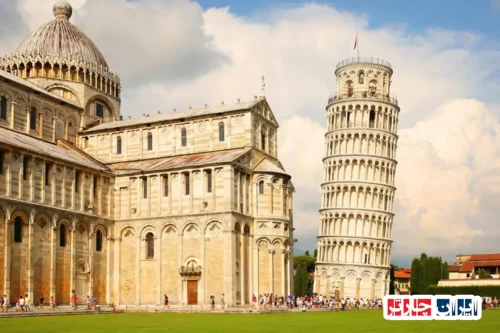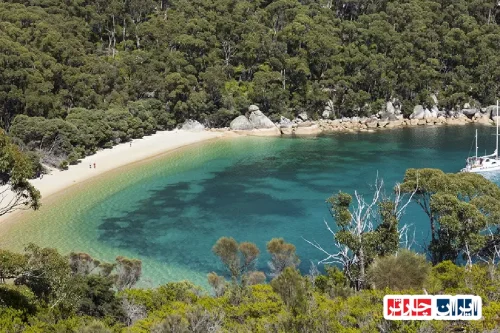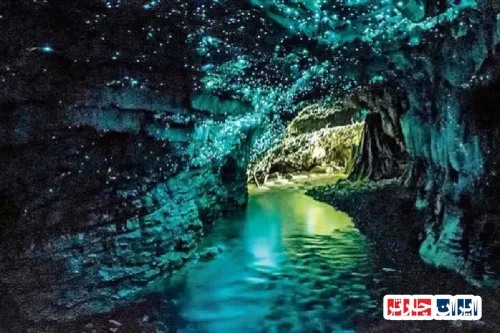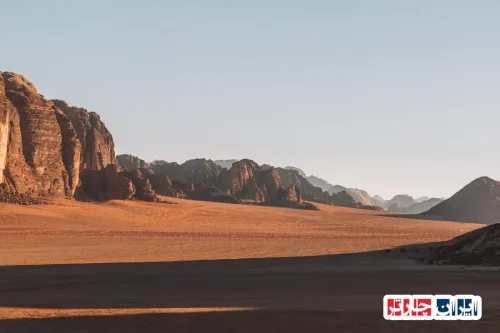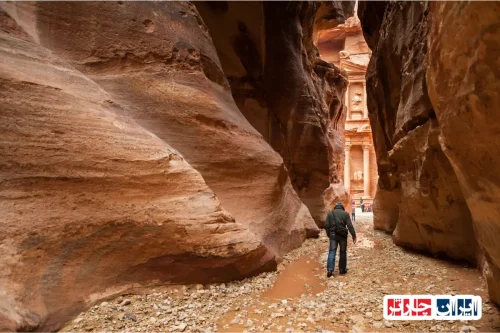Discover the Majestic Petra Monastery (Ad Deir) in Petra Jordan: An Unforgettable Journey into History and Architecture
Exploring the Petra Monastery (Ad Deir)-Iran Charter offers a unique opportunity to witness one of the most iconic monuments in Petra Jordan. This ancient structure, carved into the rose-red cliffs, stands as a testament to the incredible craftsmanship and spiritual significance of the Nabataean civilization. The grandeur of the Petra Monastery, also known as Ad Deir, captivates visitors with its impressive façade, towering over 45 meters high, and its rich history that dates back to over two thousand years. As you ascend the winding path through scenic landscapes, the anticipation of reaching this monumental site heightens, making the journey as memorable as the destination itself. The Petra Monastery’s strategic location and architectural brilliance reflect the advanced engineering skills of ancient Nabataean artisans, making it a must-visit for history enthusiasts and architecture lovers alike. Whether exploring the intricate carvings or marveling at the panoramic views from the top, every moment at Petra Monastery (Ad Deir) in Petra Jordan is an immersive experience into a bygone era of cultural and spiritual grandeur. This site continues to inspire awe and admiration, drawing travelers from around the world to witness its timeless beauty and historical significance.
The History and Significance of Petra Monastery (Ad Deir) in Petra, Jordan
The Petra Monastery, known locally as Ad Deir, stands as a monumental symbol of the ancient Nabatean civilization in Jordan. Built in the first century AD, this awe-inspiring structure was a religious and cultural hub, reflecting the spiritual beliefs and architectural prowess of the Nabateans. Its strategic location within the rugged terrain of Petra made it a sacred site for worship and ceremonial gatherings, symbolizing divine authority and cultural identity. Over centuries, the Monastery has witnessed numerous historical events, from its initial religious purpose to its role in regional trade routes, making it a vital part of Jordan’s archaeological heritage. Today, it continues to attract travelers worldwide, offering a glimpse into the rich history of Petra Monastery (Ad Deir) in Petra, Jordan.
Unique Architecture and Design of Petra Monastery (Ad Deir)
The architecture of Petra Monastery (Ad Deir) exemplifies the mastery of Nabatean craftsmanship, blending Hellenistic influences with local stone-carving techniques. Standing approximately 50 meters tall, its façade features a grand façade with intricate carvings, columns, and a central doorway that leads into a spacious interior. The structure’s design incorporates a combination of monumental scale and detailed ornamentation, showcasing the advanced engineering skills of its creators. The use of natural sandstone cliffs as a backdrop enhances its majestic appearance, making it one of the most iconic structures in Petra. The interior spaces, though less preserved, reveal a sophisticated understanding of space utilization for religious and ceremonial purposes. This architectural marvel continues to inspire architects and historians alike, serving as a testament to the ingenuity of the Nabateans.
The Cultural and Religious Role of Petra Monastery (Ad Deir) in Nabatean Society
In Nabatean society, Petra Monastery (Ad Deir) was more than just an architectural wonder; it was a vital religious center. It likely served as a temple or a place for worship, where rituals honoring deities and celestial events took place. The structure’s grandeur signified its importance in reinforcing the divine authority of local rulers and religious leaders. It also played a role in community gatherings, festivals, and ceremonial rites, fostering social cohesion among the Nabateans. The Monastery’s strategic location and imposing presence symbolized the spiritual connection between the people and their gods, emphasizing its significance in their daily lives. Even after the decline of Nabatean civilization, the site remained a symbol of spiritual and cultural identity, influencing subsequent civilizations in the region.
Recent Discoveries and Hidden Secrets of Petra Monastery (Ad Deir)
Archaeological excavations around Petra Monastery (Ad Deir) have uncovered fascinating insights into its multifaceted functions. Recent discoveries include inscriptions, carvings, and artifacts suggesting that the site may have been used for more than religious ceremonies—possibly as a political or social gathering place. Hidden chambers and secret passages have been identified, hinting at complex internal structures that served various purposes over centuries. Some evidence points to the Monastery’s role in regional trade and diplomacy, as a secure meeting point for Nabatean leaders. These findings continue to deepen our understanding of Petra’s historical complexity, revealing that the Monastery was not only a religious monument but also a center of political power and social activity in ancient times.
How to Reach Petra Monastery (Ad Deir): An Unforgettable Journey
Reaching Petra Monastery (Ad Deir) involves traversing scenic routes through the rugged terrain of Petra, offering travelers an immersive experience in nature. The most popular route begins from the Siq, a narrow canyon that leads directly into the archaeological site, followed by a challenging hike up the steep trail—approximately 800 steps—through breathtaking landscapes. Alternatively, visitors can opt for a horseback ride or a mule trek for a more comfortable ascent. The journey itself provides spectacular views of the surrounding mountains, desert, and ancient ruins, making it a memorable adventure. Proper footwear, water, and sun protection are essential for a safe and enjoyable trek. The effort to reach the Monastery is rewarded with stunning panoramic views and the chance to connect deeply with Jordan’s natural beauty and historical grandeur.
The Impact of Cinema and Media on the Global Fame of Petra Monastery (Ad Deir)
Petra Monastery (Ad Deir) has gained worldwide recognition through its appearances in films, documentaries, and travel media, elevating its status as a must-visit destination. Iconic movies have showcased its majestic façade, captivating audiences and inspiring countless travelers to explore Jordan. The visual exposure has transformed Petra into a symbol of adventure and historical mystery, fueling tourism and cultural interest globally. Media coverage emphasizes its architectural grandeur and scenic surroundings, making it a popular backdrop for photography and storytelling. This exposure not only boosts local tourism but also highlights the importance of preserving such invaluable heritage sites for future generations. The influence of cinema and media continues to play a crucial role in promoting Petra Monastery as a cultural and historical icon worldwide.
Preservation and Conservation of Petra Monastery (Ad Deir): Challenges and Strategies
Protecting Petra Monastery (Ad Deir) from natural and human-induced threats requires ongoing conservation efforts. Environmental factors such as erosion, earthquakes, and climate change pose significant risks to its structural integrity. Human activities, including tourism and vandalism, also threaten its preservation. To address these challenges, authorities employ advanced techniques like structural reinforcement, controlled access, and digital documentation through 3D scanning. Educational programs aim to raise awareness among visitors about the importance of conservation. Collaboration with international heritage organizations ensures the application of best practices in preservation. Regular maintenance, monitoring, and sustainable tourism practices are essential to safeguard this UNESCO World Heritage site for future generations, ensuring that its historical and cultural significance endures.
The Role of Petra Monastery (Ad Deir) in Modern Cultural Identity and Tourism
Today, Petra Monastery (Ad Deir) stands as a symbol of Jordan’s rich cultural heritage and a cornerstone of its tourism industry. It attracts millions of visitors annually, contributing significantly to the local economy. The site embodies the historical ingenuity of the Nabateans and serves as an inspiration for cultural pride and national identity. Tourism initiatives focus on sustainable practices, including guided tours, educational programs, and infrastructure development, to enhance visitor experience while preserving the site. The Monastery also plays a vital role in cultural diplomacy, fostering international appreciation for Jordan’s archaeological treasures. Its iconic silhouette against the desert landscape continues to inspire artists, filmmakers, and travelers, reinforcing its status as a global cultural landmark and a source of national pride.
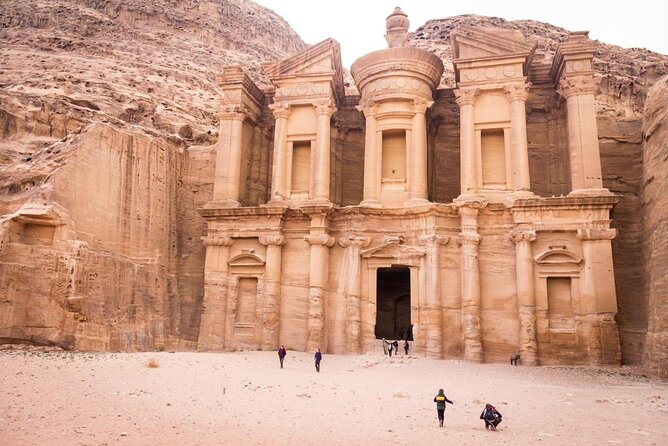
Frequently Asked Questions about Petra Monastery (Ad Deir) in Petra, Jordan
- What is the historical significance of Petra Monastery?
- Petra Monastery, also known as Ad Deir, is a symbol of the ancient Nabatean civilization. Built in the first century AD, it served as a religious and cultural center, reflecting the spiritual beliefs and architectural skills of its creators. Over centuries, it played a vital role in regional trade routes and regional history, making it a UNESCO World Heritage Site and a key archaeological monument.
- How was the architecture of Petra Monastery designed?
- The architecture combines Hellenistic influences with Nabatean craftsmanship. Its façade, approximately 50 meters tall, features intricate carvings, columns, and a central doorway. The structure showcases advanced engineering and artistic ornamentation, with natural sandstone cliffs enhancing its majestic appearance. Inside, the space was designed for religious and ceremonial purposes, demonstrating sophisticated spatial planning.
- What role did Petra Monastery play in Nabatean society?
- It was more than just an architectural marvel; it served as a religious site, possibly a temple or worship place. It reinforced divine authority and was a gathering spot for festivals and community rituals. Its strategic location and grandeur symbolized spiritual connection and social cohesion, remaining a cultural icon even after the decline of Nabatean civilization.
- Have there been recent discoveries at Petra Monastery?
- Yes, recent excavations have revealed inscriptions, carvings, and artifacts indicating the site’s multifaceted functions. Hidden chambers and passages suggest it was used for political meetings and social gatherings. Evidence also points to its role in trade and diplomacy, highlighting its importance beyond religious activities.
- How can visitors reach Petra Monastery?
- The most common route starts from the Siq, a narrow canyon leading to the site, followed by an approximately 800-step hike through scenic landscapes. Visitors can also opt for horseback or mule rides for easier access. The journey offers breathtaking views of mountains, desert, and ancient ruins, making the trek a memorable experience.
- What impact has media and cinema had on Petra’s fame?
- Films, documentaries, and travel media have showcased Petra’s majestic façade, making it a global icon. Its appearances in movies have inspired travelers worldwide and increased tourism. Media coverage emphasizes its architecture and scenic beauty, boosting its reputation as a cultural and adventure destination.
- What are the main challenges in preserving Petra Monastery?
- Environmental factors like erosion, earthquakes, and climate change threaten its structure. Human activities such as tourism and vandalism also pose risks. Preservation strategies include structural reinforcement, controlled access, digital documentation, and international cooperation to ensure its longevity.
- How does Petra Monastery influence modern Jordanian culture?
- It is a national symbol of cultural heritage and a major tourist attraction, contributing significantly to the economy. The site fosters national pride and cultural identity, inspiring art, tourism initiatives, and international relations. Its iconic silhouette continues to symbolize Jordan’s historical richness.
- Are there any special tips for visiting Petra Monastery?
- Yes, wear comfortable footwear, carry water, and protect yourself from the sun. The hike can be challenging, so plan accordingly. Visiting early in the morning or late afternoon offers cooler temperatures and better lighting for photos. Guided tours can enhance understanding of its history and architecture.
- What is the best time of year to visit Petra Monastery?
- The ideal seasons are spring (March to May) and autumn (September to November) when the weather is mild. Summers can be very hot, and winters may bring rain, making the visit less comfortable. Planning during these optimal months ensures a more enjoyable experience.
- Can Petra Monastery be visited as part of a tour package?
- Yes, many tour operators offer organized trips to Petra, including guided hikes, transportation, and accommodation options. Booking a package can simplify logistics and enrich the experience with expert insights into the site’s history and significance.
- What role does Petra Monastery play in Jordan’s tourism industry?
- It is one of the main attractions that draw millions of visitors annually, supporting local businesses and employment. Its cultural and historical value helps promote Jordan as a premier travel destination, encouraging sustainable tourism practices.
- How is Petra Monastery protected for future generations?
- Conservation efforts include structural reinforcement, digital mapping, visitor management, and international collaborations. Raising awareness about preservation among tourists and locals also plays a crucial role in safeguarding this heritage site.
- What makes Petra Monastery unique compared to other archaeological sites?
- Its monumental size, intricate carvings, and strategic location set it apart. Unlike many other sites, it combines natural beauty with architectural grandeur, symbolizing the ingenuity of the Nabateans and their cultural legacy.
- How does Petra Monastery contribute to Jordan’s cultural identity today?
- It stands as a national symbol of history and resilience, inspiring pride among Jordanians. Its global recognition fosters cultural diplomacy and promotes Jordan’s rich archaeological heritage worldwide.



